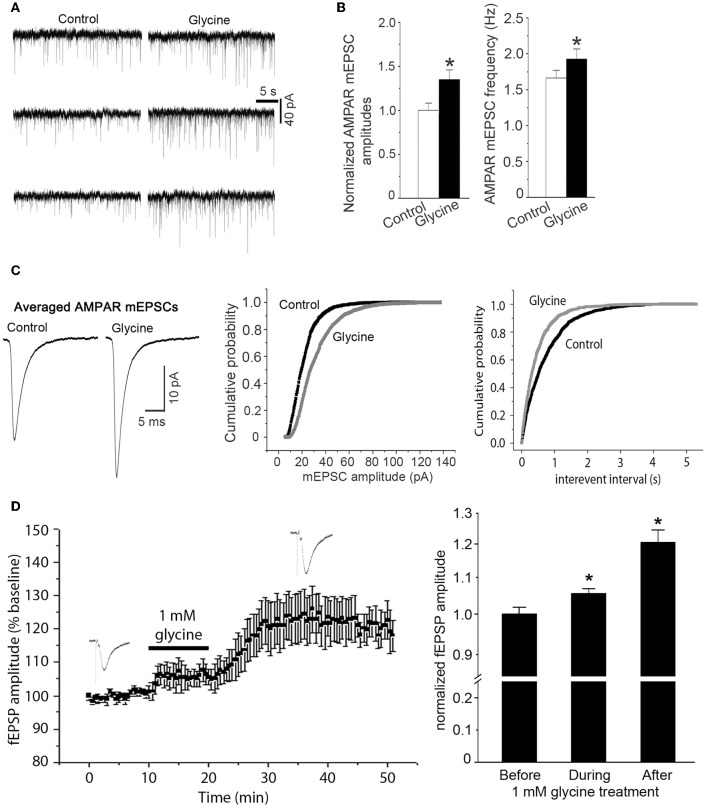Figure 2.
Glycine enhances AMPAR-mediated synaptic currents independent of NMDAR channel activity. (A) Representative AMPAR-mediated mEPSCs recorded before and 10 min after treatment of glycine (100 μM) in hippocampal neurons where NMDARs and glycine receptors are inhibited. (B) Summarized data showing that mean amplitude of AMPAR mEPSCs is significantly increased after 100 μM glycine treatment (n = 8, *p < 0.05) and that the mean frequency of AMPAR mEPSCs is also increased after glycine treatment (n = 8, *p < 0.05). (C) Left: sample of averaged AMPAR mEPSCs from the neurons before (995 events) and after (1407 events) treatment of 100 μM glycine. Middle and Right: cumulative probability plots of peak amplitudes and interevent intervals of AMPAR mEPSCs (bin size 0.5 pA and 10 ms, respectively). The mEPSCs amplitude distribution significantly shifts toward greater values after treatment of 100 μM glycine (p < 0.05). (D) Left: averaged amplitudes of AMPAR-mediated fEPSP in hippocampal slices recorded before, during and after 1.0 mM glycine treatment (n = 12). NMDARs and glycine receptors in the slices are inhibited before recording. Right: summarized data showing that glycine (1.0 mM) increases the amplitudes of AMPAR-mediated fEPSP in hippocampal slices independent of NMDAR channel activity and glycine receptor activation (n = 12, *p < 0.05 vs. Before).

